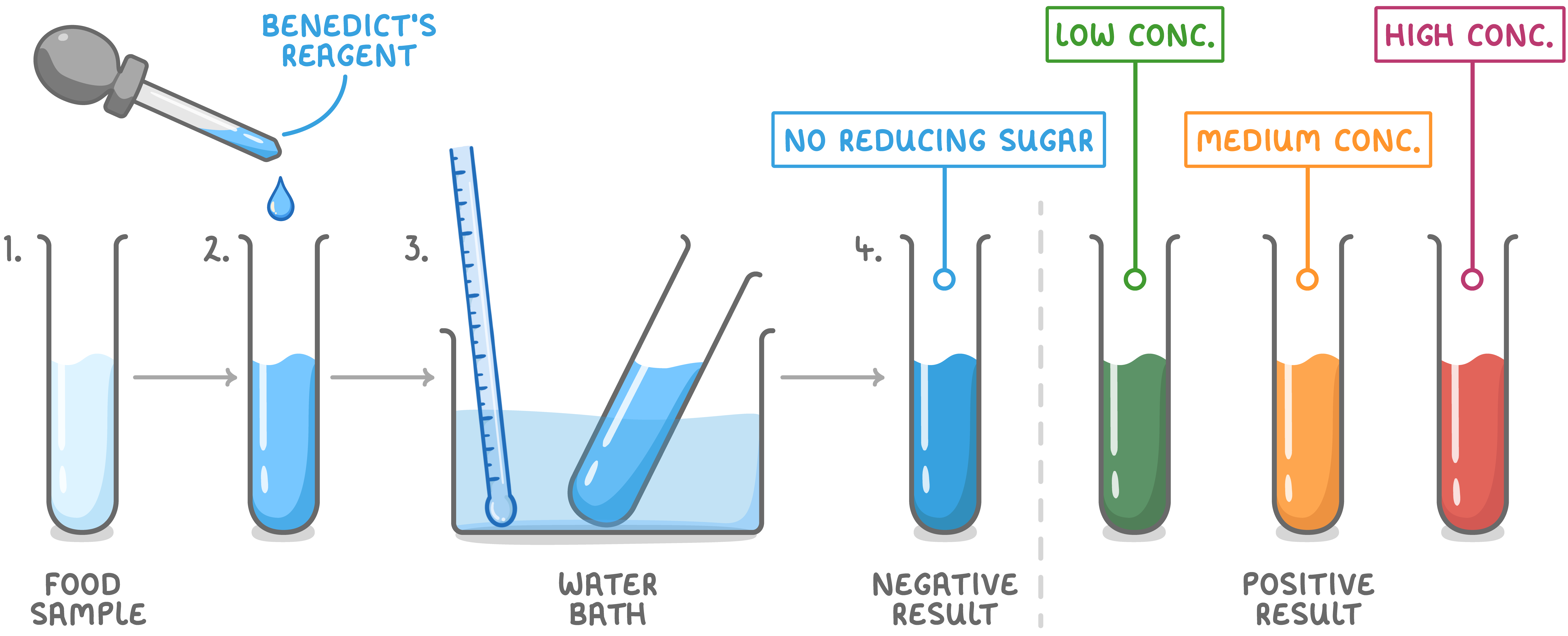Carbohydrates: Tests
This lesson covers:
- The difference between reducing sugars and non-reducing sugars
- How to test for reducing sugars (Benedict's reagent)
- How to test for non-reducing sugars
- How to test for starch (iodine)
Testing for reducing sugars All sugars can be grouped into two categories. These categories are reducing sugars and non-reducing sugars:
|
 Steps to find out whether a sample contains a reducing sugar:
|
Determining the concentration of reducing sugars A positive result will form a brick red precipitate, however the colour seen is a mixture of the precipitate and the blue Benedict's reagent. The concentration of reducing sugar determines the colour of this mixture:
This allows you to compare the concentration of reducing sugar between different samples. |
Quantitative methods to determine concentration of reducing sugars More accurate methods for comparison:
|
Testing for non-reducing sugars A non-reducing sugar will give a negative result (blue solution) for the reducing sugars test. To test for these types of sugars, you must first hydrolyse them into their monosaccharide components. Steps to find out whether a sample contains a non-reducing sugar:
|
Testing for starch  To find out if a sample contains starch, you must carry out the iodine test. Steps to find out whether a sample contains starch:
|